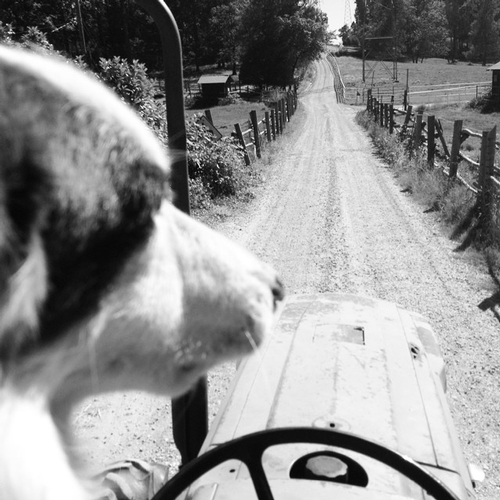The Social Farmer
Many of you have experienced the long, isolated days of the farm. The work that we do as small, family farmers is often the work of one. And while we'd love for it to be the work of many (many hands = light work + more fun) the financial realities of our businesses do not always allow for work parties. Here's a thought: share the experiences of your farm day with your community through Social Media. Sharing a quick photo of the broken belt of your flail mower or writing a short note about the heat of summer is not the same as real-time human contact. It is, however, another avenue of social encouragement from colleagues, friends, and oddly enough, strangers. You deserve to feel a connection to the broader community that supports the work you do.
The benefits of social media are numerous. On a personal level, sharing through social media adds a creative element into your day and an opportunity for you to let others know about the life you lead as a farmer. Social media can help you to connect with the community of eaters that support your farm, many of whom are often eager for a deeper connection to the food they eat and the farms that produce it. Social media is a great way to connect with other farmers as well, both here in your own backyard, around the country and even internationally. Share the technical aspect of your work. Other farmers DO want to see a picture of that new irrigation header you just built or the insulation in your walk-in cooler.
Another very useful benefit of social media is the automatic record keeping that occurs alongside your social media posts. Just planted your next radish succession? Take a picture, post it, hashtag it so you can find it later, and voila- you've just make a very accurate record of a farm event. Just made a beautiful bouquet of today's best blooms? Take a picture, post it, hashtag it and you've just made a record of flower availability for years to come. These farm records are not a pile of partially filled out charts crowding your inbox; they are a beautiful, chronological display of your farming activities, easy to access, and stored on the internet for all, foreseeable time.
A note of caution: be mindful of what you make public on the internet. Try not to over share your life. Choose posts and photos that are both useful to your farm as well as interesting to the people that follow you on social media. Remember that people you don't know and may never meet will see your posts.
There are many platforms to choose from and the majority of them are easy to use from your smartphone. Twitter and Instagram are applications that were designed specifically for hand-held devices which means they are very appropriate for farmers to use in the field. A great thing about many of these social media sites (Instagram and Twitter in particular) is that they are fast and dirty (kind of like farming, except for the fast part) and won't take much time out of your busy day. A blog is a great way to tell your farm story, but it is also a considerable time commitment. It will take a few minutes to snap a photo and post it to the internet.
Whether it is through photos or words, tell us the story of your farm. We should all pause more often to appreciate the wonder, beauty, intensity, hilarity, pain and grit of our daily work.
Check out what some of our Placer and Nevada county farmers are doing on the World Wide Web:
https://www.facebook.com/pages/South-Fork-Farm/446566642072107
https://twitter.com/flyingmulefarm
http://instagram.com/localyolk?modal=true
https://www.facebook.com/FoothillRootsFarm
http://instagram.com/dinnerbellpaul
http://www.pinterest.com/littleboyflower/
https://twitter.com/DinnerBellFarm
https://www.facebook.com/HillviewFarms.ca


